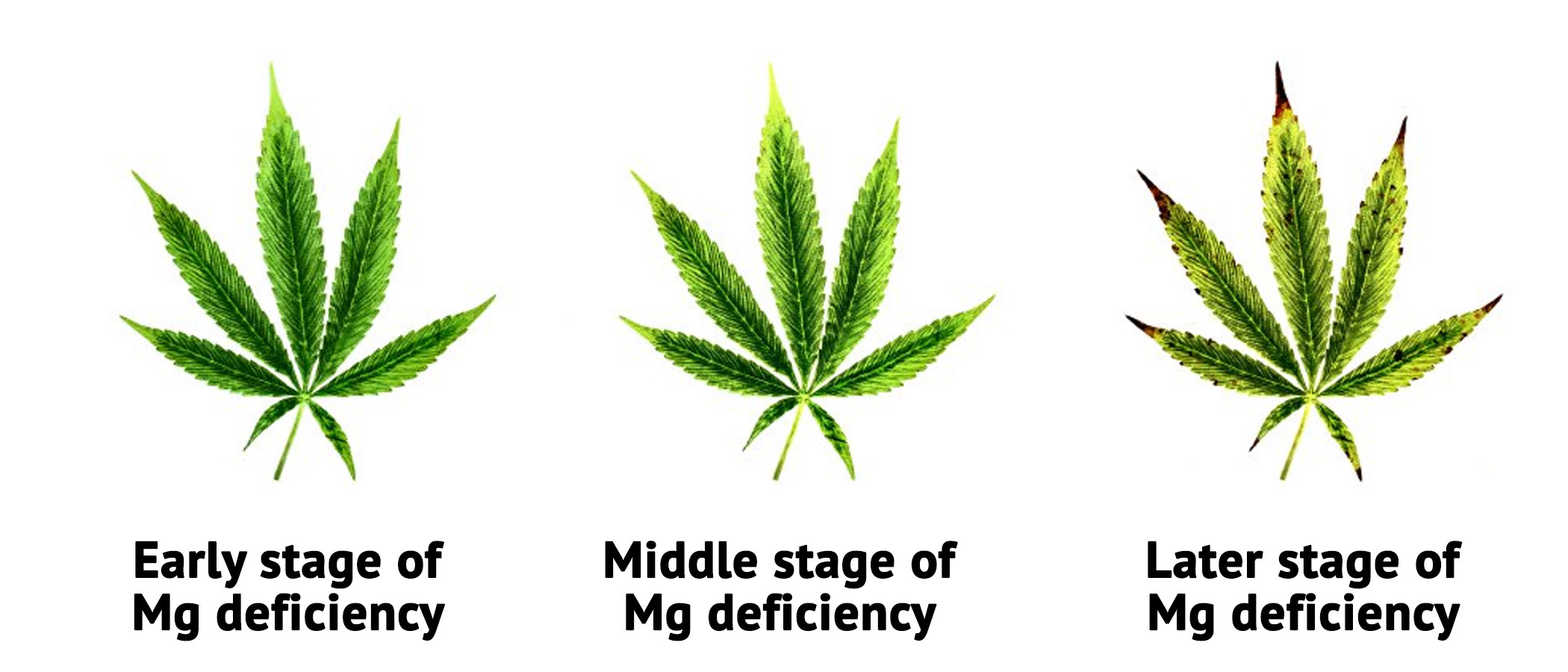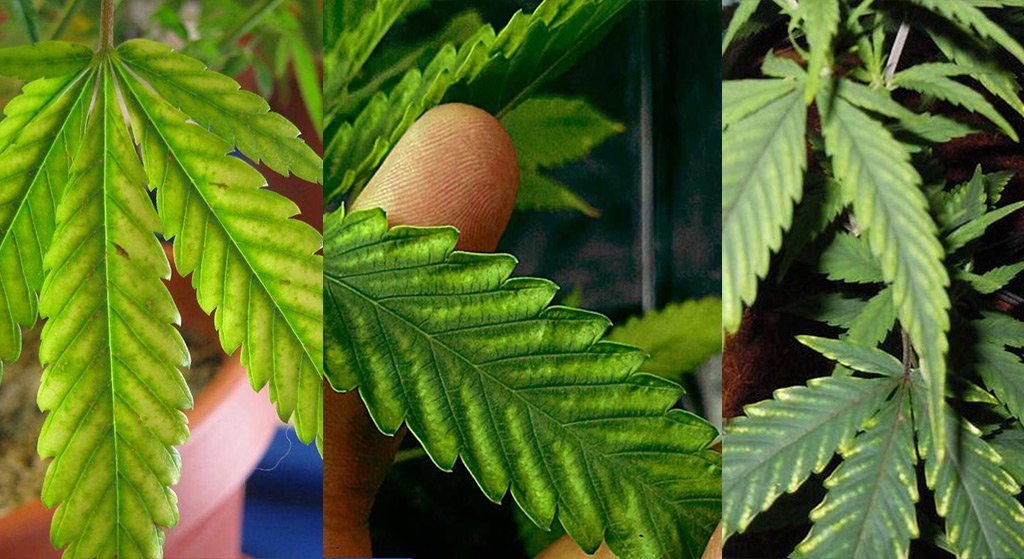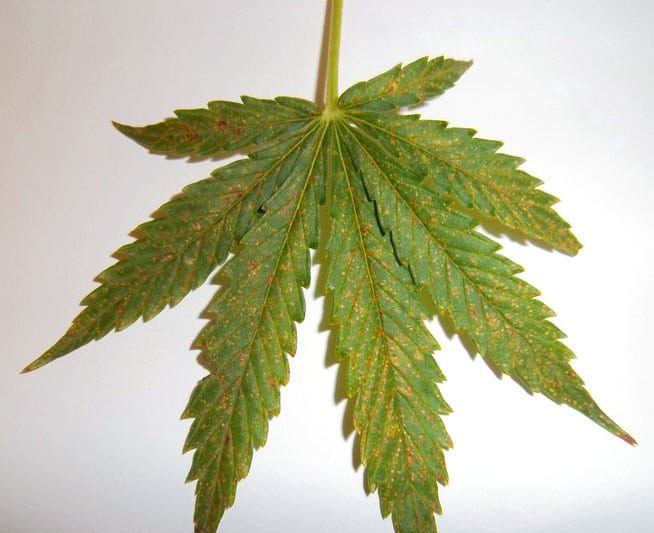
Cal-Mag is one of the best nutrients to employ to encourage happier, healthier plants, but what should you do if your plant becomes deficient in Cal-Mag while it is in the flowering stage?
Continue reading to find out more about the signs of a Cal-Mag shortage and how to remedy one while your plant is in bloom.
Table of Contents
Cal-Mag Deficiency Symptoms
Small dots that appear in the centre of older leaves frequently represent the earliest symptoms of a Cal-Mag deficit. Typically, the dots are brown and yellow.
The severity of the insufficiency is increasing if there are more spots and they take on a rusty appearance. If the leaf veins stay green, it is clear that the leaves are becoming yellow due to a Cal-Mag shortage rather than another cause.
Leaf tips that are curling and becoming brown are another warning indicator.
The Importance of Calcium and Magnesium for Plants
Secondary minerals that are essential for optimal plant growth include calcium and magnesium.
While calcium and magnesium are less essential than fundamental nutrients, they nonetheless contribute to pH stability and healthy growth throughout the plant cycle.
Helping plant roots absorb more moisture and nutrients from the soil is one of Cal-other Mag’s main uses.
Supplies Needed
- I strongly suggest the Cal-Mag product (to feed the plant with). Caliber Plus
- a 1-gallon jug or water can (for delivering the solution)
- Natural water is optional (which contains calcium and magnesium)
- Epsom salts and calcium nitrate are optional (for DIY Cal-Mag solution)
1. Diagnose a Cal-Mag Deficiency in Your Plant
Keep an eye on the foliage when your plant is flowering. You may have identified a case of Cal-Mag insufficiency if you detect browning leaf tips and brown or rusty colored spots in the center of leaves.
Check the yellowing centers on the leaves or the foliage afflicted by browning leaf tips and dots for green veins if you notice any evidence of a deficit.
It is most certainly a Cal-Mag issue if the leaf veins are still green. However, if the veins are yellow or brown, your plant probably has another problem.
2. Mix Cal-Mag Solution in Water
Cal-Mag is easy to prepare for usage; just adhere to the directions on the product (as there are various products available).
For the most part, it’s as easy as mixing up a gallon of water with as little as a teaspoon of raw Cal-Mag.
You can use a watering can, 1-gallon container, or even a garden sprayer to add the solution to. Once more, make sure to read and adhere to the product’s label’s directions.
3. Deliver Cal-Mag to Plant’s Growing Medium

But take great care to keep the solution away from the plant’s leaves, buds, and flowers.
It is essential to keep the plants dry during the flowering stages because too much moisture might have catastrophic consequences.
If you usually use a diluted Cal-Mag, you may just follow your regular watering routine while including the solution.
4. Monitor Your Plants and Follow Up
Following Cal-Mag deficiency treatment, monitor your plants to see that their health is improving.
The plant should start to recover a week or two after beginning the treatments (e.g., old leaves falling off, new leaves growing with no spots).
The procedure must be repeated, though, as the problem is plainly still there if more leaf tips turn brown or if the centers of the leaves develop rusty spots or fading.
Continue watering and taking care of your plant as usual until the plant has recovered and the foliage is green and healthy with no damaged leaves.
5. (Optional Step) Mix Your Own Homemade Cal-Mag
Why is there a fifth step while the article claims there are only four ways to correct a Cal-Mag shortage during flowering?
Simple: It’s optional, and if you choose to follow it, you’ll do it in place of step 2 above rather than as a step following step 4 in the process.
The procedure is straightforward: combine 5 grams of Epsom salts with 6–7 grams of calcium nitrate, then add the mixture to 1 gallon of water.
Does Cal-Mag Raise or Lower pH?
The calcium nitrate in Cal-Mag gradually raises the pH level of the soil surrounding your plants.
For this reason, when using Cal-Mag, it’s important to pay attention to the other fertilizers and/or kinds of plant food that you provide plants.
Can You Overfeed Cal-Mag?
Technically, you can give your plants too much Cal-Mag. However, accomplishing that is a rather difficult task.
The most typical way for it to happen is by providing plants with additional items that are highly calcium-rich.
The pH level increases in soil that contains too much calcium buildup for plants. If the soil isn’t corrected when the pH is too high, plants will perish.
Can You Spray Cal-Mag on Plants?
Spraying Cal-Mag on plants is completely harmless and even advised. The vegetative and transitional states are the ideal times to achieve this.
The excess moisture from spraying Cal-Mag on plants during flowering cycles could harm the buds and flowers or even start mold growth.
Can You Make a Homemade Cal-Mag?
The DIY enthusiasts out there will be pleased to learn that homemade Cal-Mag is indeed a possibility.
All you need to do is buy calcium nitrate and Epsom salts, which can be found at most neighborhood gardening stores.
Mix 6 to 7 grams of calcium nitrate with every 4.5 to 5 grams of Epsom salts. Add the aforementioned components to one gallon of water.
FAQ
Can you add too much CalMag?
Just be careful not to add too much to the nutrition solution. In most situations, 0.5ml per Litre is sufficient. 3.2% calcium, 1.2% magnesium, 0.1% iron, and 2.6% nitrogen make up CalMag.
What are the signs of Cal-Mag deficiency?
The most typical symptoms of calcium insufficiency are localized decay and restricted growth. The most impacted areas include young leaf tips, buds, and fruits. Stunted growth in the roots has a significant negative impact on the plant’s overall growth.
What does calcium magnesium deficiency look like?
Should you use CalMag every watering?
Use as needed with each watering. Mix thoroughly and adjust pH as necessary. Before each usage, give a good shake. Before application, mix well and adjust pH to 6.2-7.0 by adding 1 tsp (5ml) per gallon of water.
Can Cal-Mag hurt plants?
Since an incorrect EC level makes it difficult for plants to absorb water, nutrients, and oxygen, using Cal-Mag without first checking EC levels using an accurate tester like this could be harmful to your plants.
Final thoughts About Fixing Cal-Mag Deficiency During Flowering

Just keep in mind to avoid spraying Cal-Mag directly onto your plants while they are in bloom. Otherwise, you might have wasted your time working so hard!
